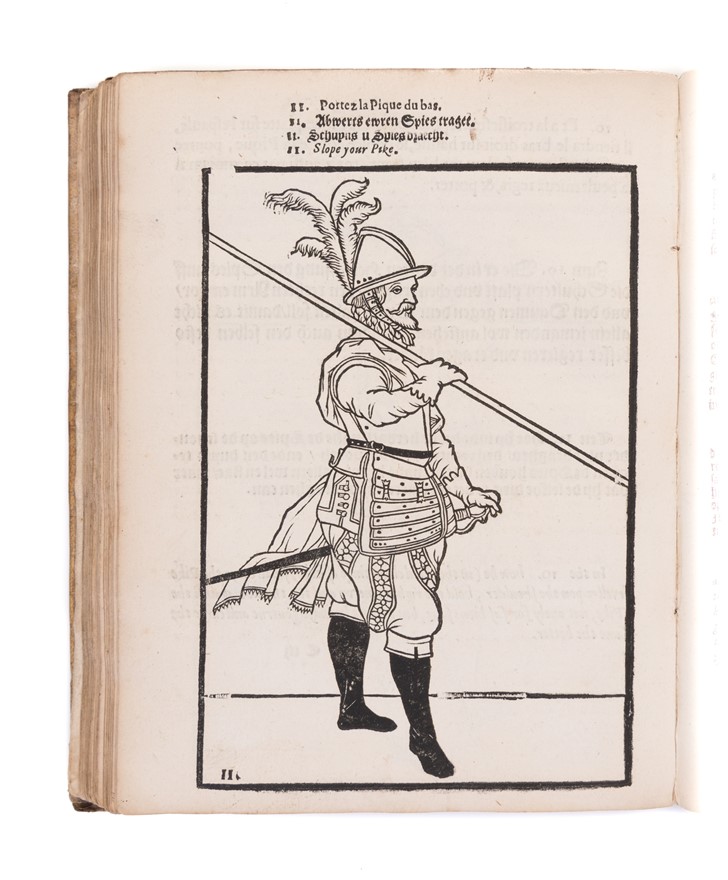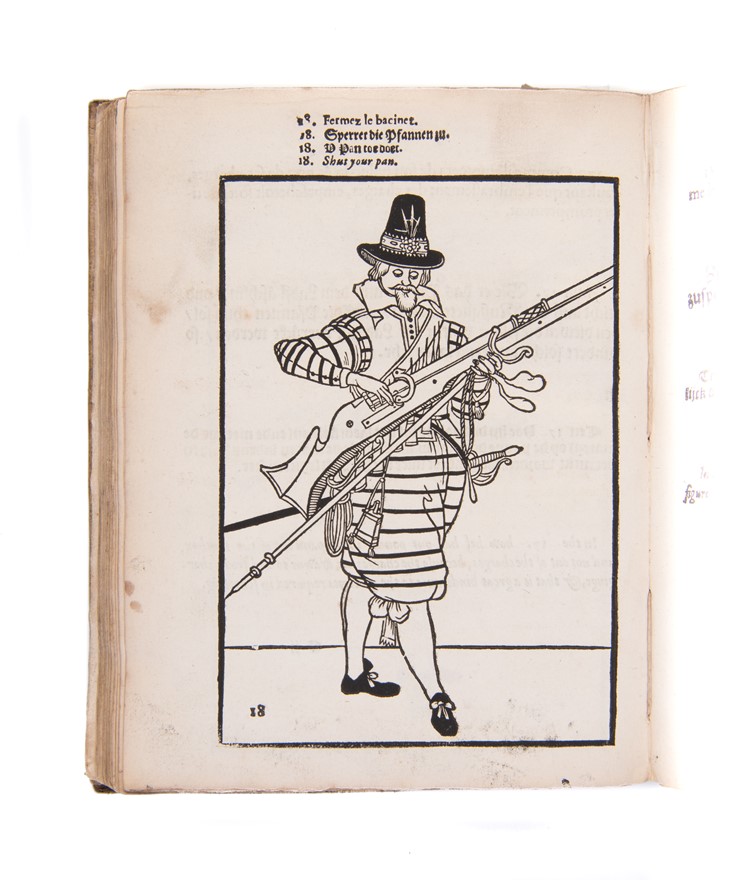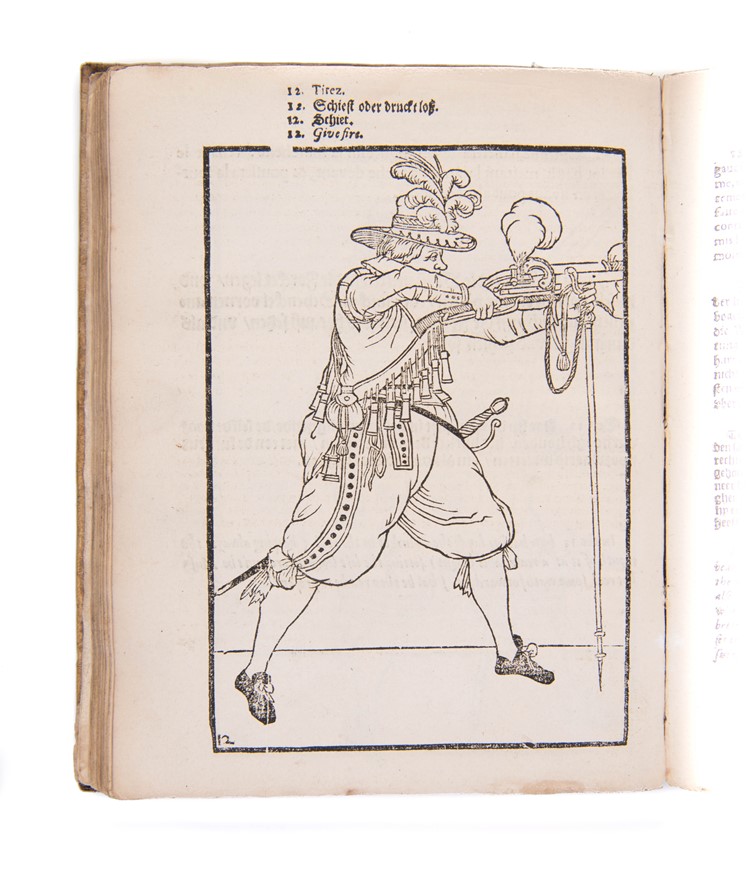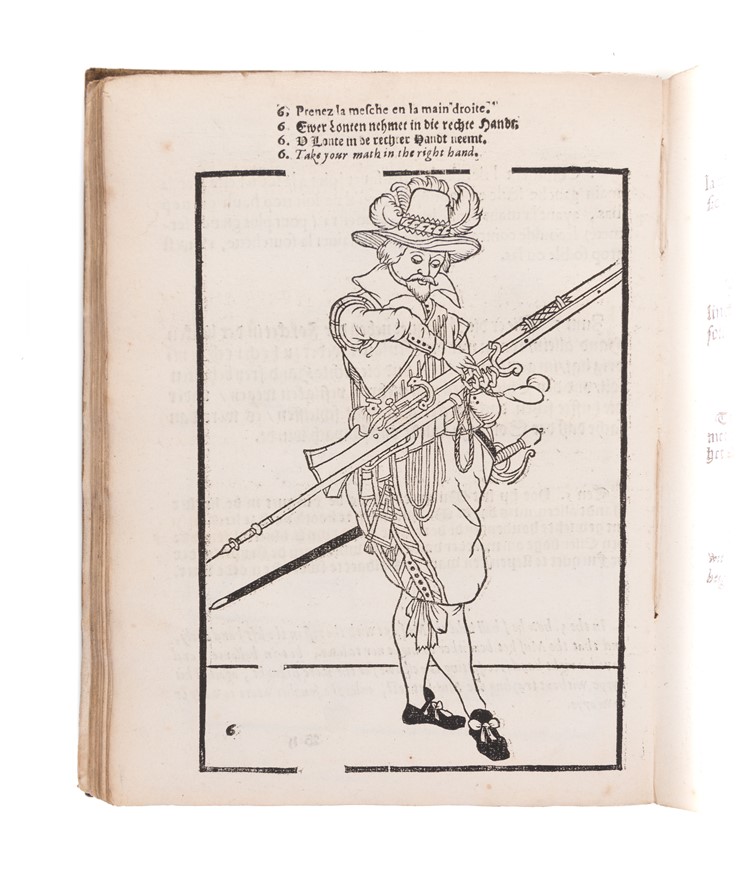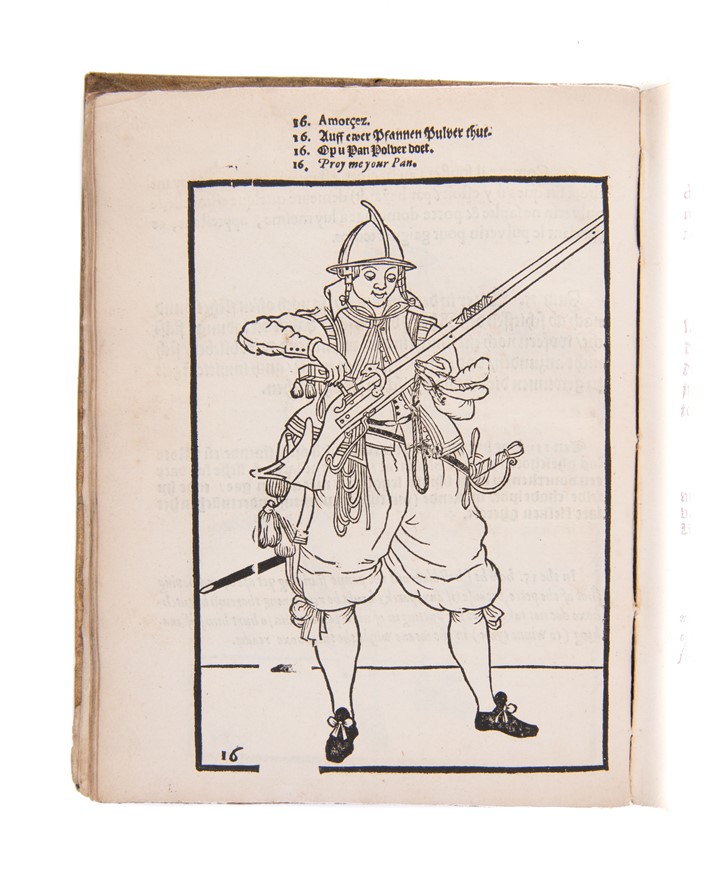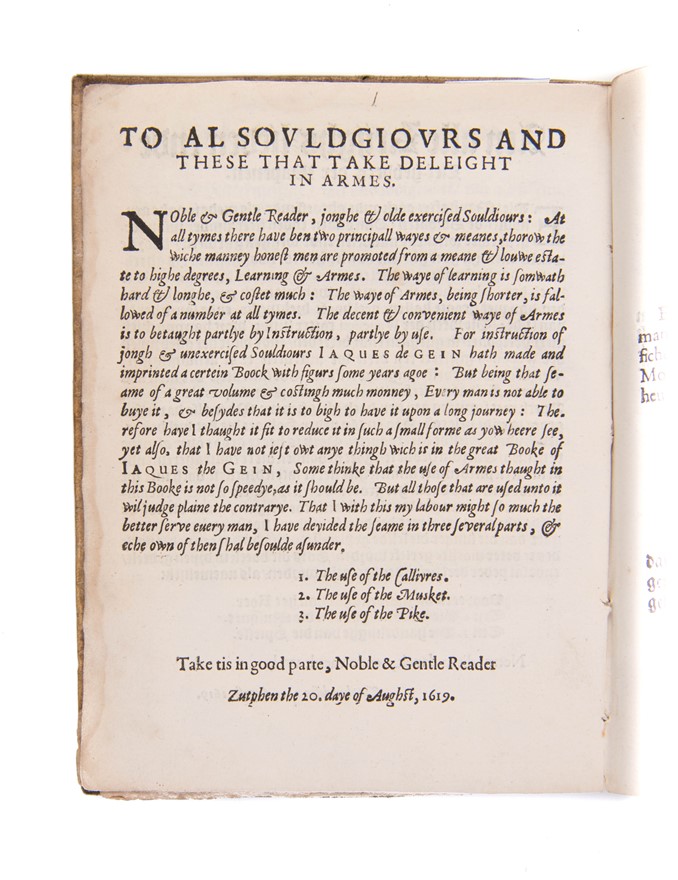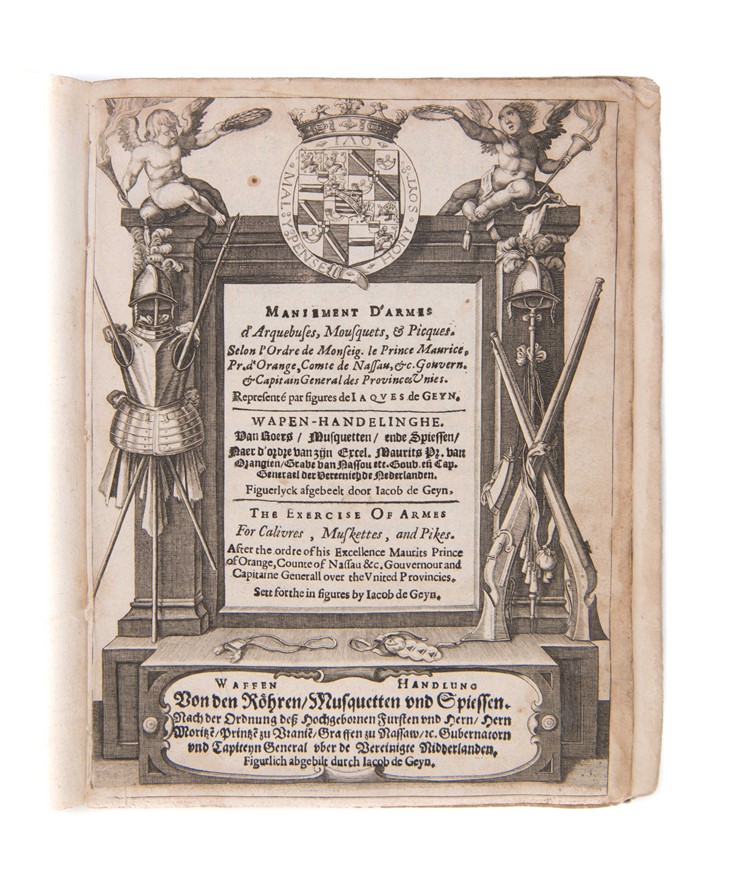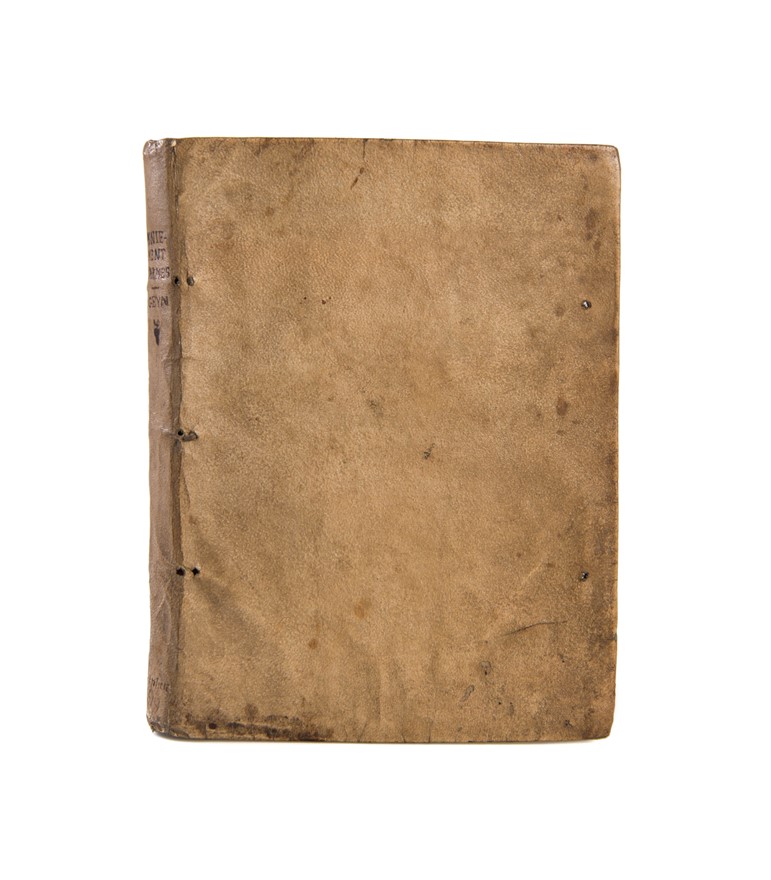Maniement d'armes d'arquebuses, mousquets, & picques Selon l'ordre de monseig. le Prince Maurice, Pr. d'Orange, Comte de Nassau...Wapen-handelinghe van roers, musquetten, en spiessen... The exercise of armes for calivres, muskettes, and pikes... Waffen handlung von den köhren, mussquetten vnd spiessen...Zutphen: André Ianssen d'Aelst, [ca. 1620].
GHEYN Jacques de ([1619])
£12500.00
Please contact us in advance if you would like to view this book at our Curzon Street shop.
EXTREMELY RARE - WITH ENGLISH TEXT
Engraved title-page and 117 numbered woodcuts in three series (42, 43, 32).
4to (295 x 155mm). 3 parts, ff.[4], [44], [44], [33] with blank [1st] L4 and final I1 (stub visible). Contemporary Dutch limp vellum, lacking ties.
Zutphen: André Ianssen d'Aelst, [ca. 1619].
A beautiful copy of this classic early 17th-century work on the use of hand weapons, a polyglot edition in quarto including English text, illustrated with woodcuts, and portable so far more practical than the lavish folio edition with engraved plates. Extremely rare, recorded by ESTC in three copies only (British Library, Bodleian Oxford, and the Ministry of Defence Library).
The publisher's preface, given in French, German, Dutch and English, is addressed to 'al souldgiours and these that take deleight in armes'. It is dated from Zutphen, 20 August 1619, and states that because the original work in folio is expensive and too big to be had on a long journey he has 'thaught fit to reduce it in such a small forme as yow heere see' but has 'not left owt anye thingh wich is in the great Booke.' He also tells us that he has divided it into three parts, 'eche own of them shal be soulde asunder'. The three parts are '1. The use of the callivres. 2. The use of the Musket. 3. The use of the Pike.' The OED defines 'calliver' thus: 'a light kind of musket or arquebus... it seems to have been the lightest portable firearm, excepting the pistol, and to have been fired without a 'rest'.' The section on muskets shows them all using a 'rest.'
In the main text each page spread comprises a numbered woodcut illustration on the left hand page with a heading in French, German, Dutch and English above and a description in the same languages on the right hand page. The setting of the English text (printed in italic) is less expert than that shown in the other languages and the initial long 's' is particularly badly handled, as is punctuation.
Jacques de Gheyn II (1565-1629) was a pupil of Hendrick Goltzius, and rapidly rose to fame as artist and engraver, and even a miniaturist. His book on the use of weapons, which obtained a privilege dated 29 May 1605, was published over the next couple of years; the French edition of the text (a translation of the original) was published in 1608. The book was a great success in this quarto polyglot format, which, one supposes was issued thus either for sound commercial reasons - as all soldiers used these weapons - or to reflect the mixed nature of mercenary armies..
Provenance: note of purchase at the Hague 6 May 1627, with a second deleted note of ownership with date; the Huth copy with their morocco label (Catalogue (1880) ii, p. 414). Henry Huth (1815-1878), by descent to his son Alfred H. Huth (1850-1910); his sale Sothebys, Second Portion, 13 June 1912, lot 2299. From the military library of Thomas Fremantle, 3rd Lord Cottesloe (1867-1956).
ESTC S92680 (STC 11812.5). Cockle, p. 65. Thieme-Becker, 13, 530-532. OCLC adds in the US a coloured copy at the Getty, and copies at the Smithsonian and Brown (incomplete).
Stock Code: 234083
